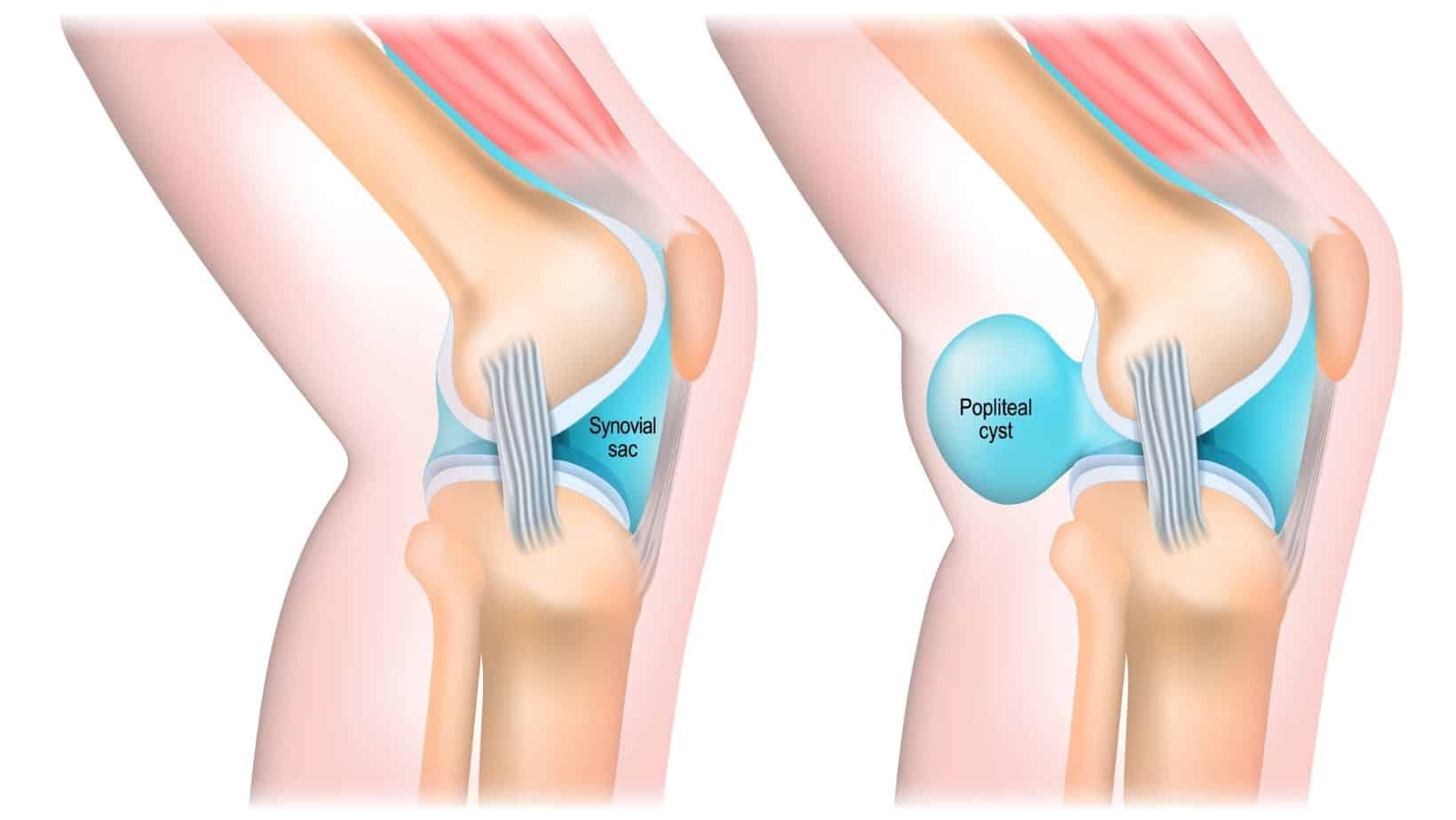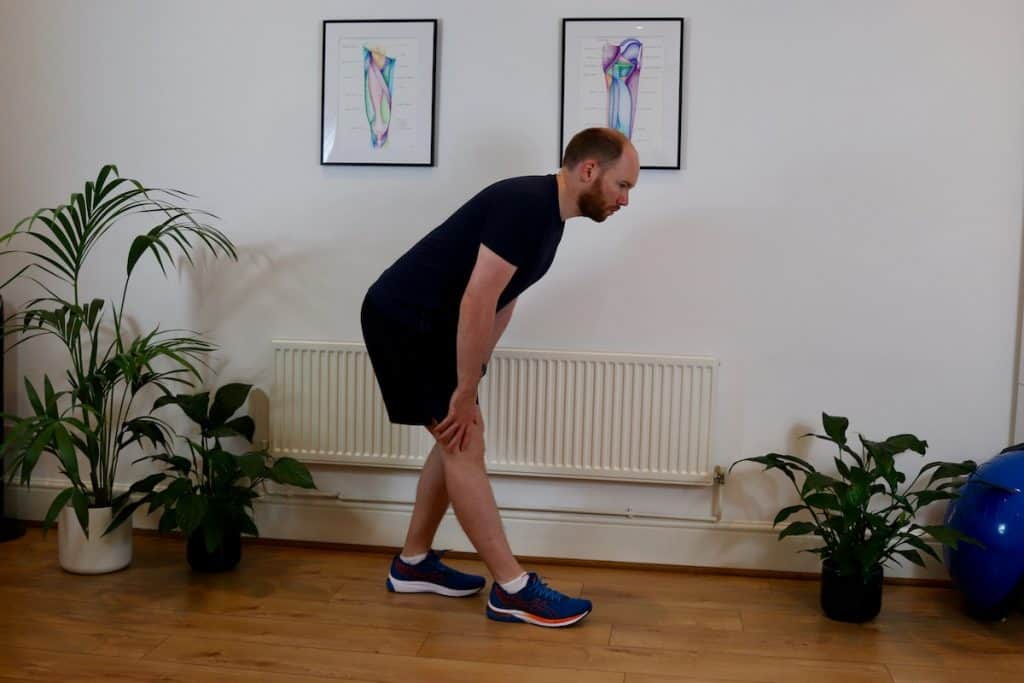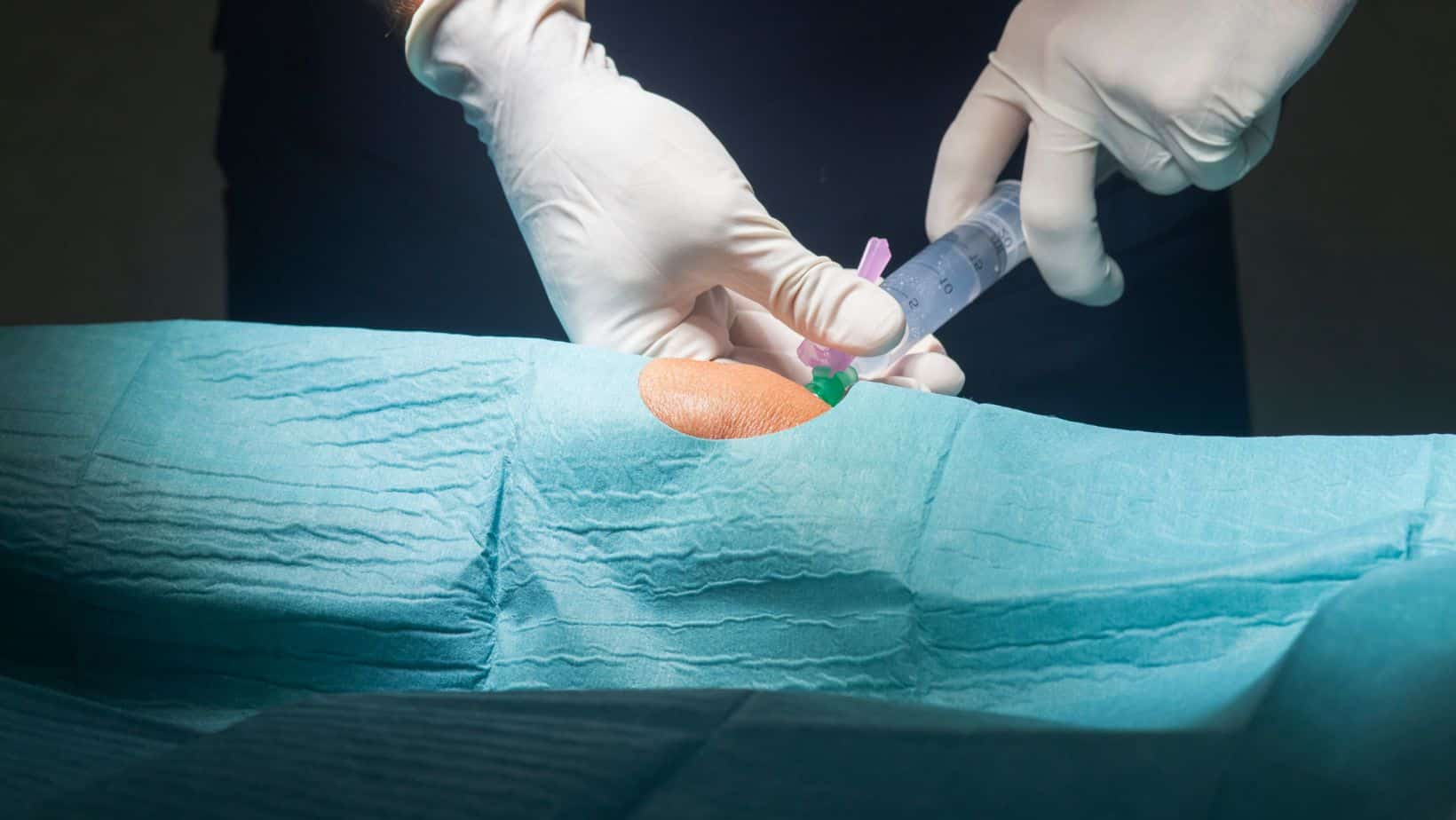Best Knee Wrap for Baker’s Cyst
Read More >

A Baker’s cyst is a painful swelling at the back of the knee, caused by movement of synovial fluid out of the knee joint towards the back of the knee. This condition is not only painful but can also affect range of movement by restricting flexion of the knee. You can read more about this condition in our related article: Baker’s Cyst. Once diagnosed Treatment for a Baker’s cyst will start with rest from aggravating activities, as well as elevation and compression to help reduce the swelling. Click here to read our recommendations for the Best Knee Wrap for Baker’s Cyst.
The best exercises for baker’s cyst include stretches for the back of the knee, such as the calf and hamstring muscles. Gentle mobility of the joint such as with a heel slide exercise to gently bend and straighten the knee joint is also very helpful. It is important in the acute stages not to aggravate the joint so exercises should be pain free and swelling should be closely monitored afterwards.


The healing time of a Baker’s cyst is variable depending on the causes for its development, the health of the knee joint and the individual and the activity level and ability to rest the joint. Many can significantly reduce in size with 2-6 weeks of rest and appropriate care.
If the Baker’s cyst ruptures and burst, the fluid from within the cyst will move into the tissue under the skin, at the back of the knee and in the calf area. This will reabsorb into the tissue but will need several weeks for this to occur.
If a Baker’s cyst is not recovering on its own with rest, compression, and elevation then additional treatment interventions might be recommended. Additional treatment include aspiration or removal of the cyst. Aspiration is the with drawl of fluid from the cyst using a syringe. If the fluid is too thick, as it becomes with a chronic Baker’s cyst, it is not possible to aspirate and surgery may be recommended to remove the cyst and repair the connective tissue of the knee joint capsule.

Recovery from surgery depends on the procedure, the health of the knee and the individuals health and age. From aspiration recovery time is usually no more than a week, for surgery it will need longer, usually 4-6 weeks.

While the positive effects of essential oils is widely discussed for many different uses there is little evidence to support the use of essential oils for the treatment of Baker’s cyst. It is discussed that using essential oils with anti-inflammatory properties such as frankincense, turmeric and ginger oils amongst others, and those with pain relieving properties such as peppermint, wintergreen and clove oils, can help with Baker’s cyst symptoms.
This is not medical advice. We recommend a consultation with a medical professional such as James McCormack. He offers Online Physiotherapy Appointments for £45.
Related Articles:
Conditions that cause pain behind the knee
Best Knee Wrap for a Baker’s Cyst
Symptoms & Causes of a Baker’s Cyst
Baker’s Cyst Massage